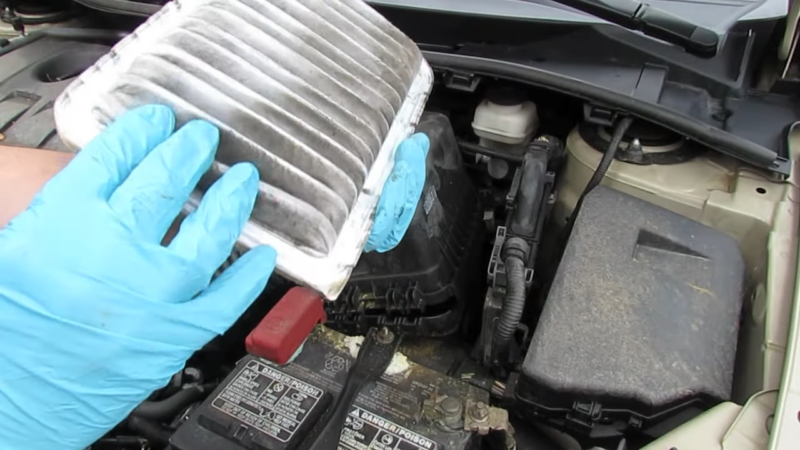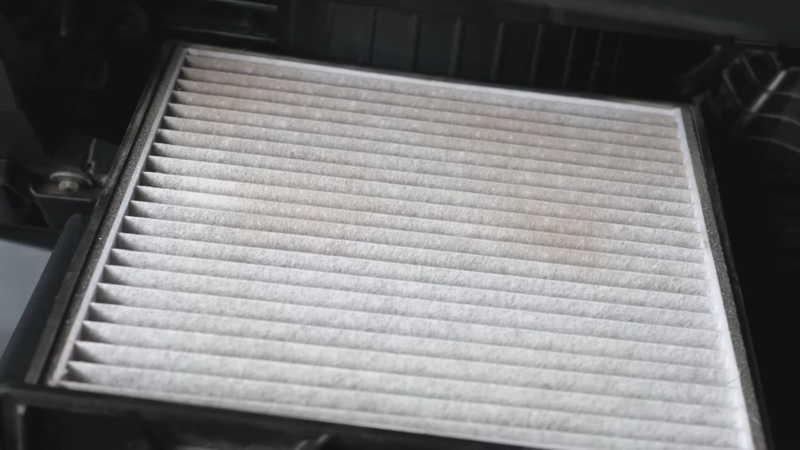The air filter directly impacts a car’s engine performance by ensuring clean air reaches the combustion chamber.
A clogged filter reduces efficiency, increases fuel use, and risks long-term damage.
Replacement typically occurs every 12,000 to 15,000 miles, though harsh conditions like dusty rural roads can shorten this to 6,000 miles.
For example, a driver in a desert region might need to swap it twice as often as someone in a clean urban area.
Recommended Replacement Intervals

Manufacturers generally recommend replacing the air filter every 12,000 to 15,000 miles, aligning with the typical annual mileage for many drivers (roughly 1,000 miles per month).
This guideline assumes average conditions—paved roads, moderate climate, and minimal dust exposure. However, real-world variables often demand a more tailored approach.
Drivers in urban environments with heavy traffic and exhaust pollution may adhere to the upper end of this range, as particulate levels remain relatively low.
Conversely, those navigating rural gravel roads, desert regions, or construction-heavy zones face accelerated filter clogging, necessitating replacement as frequently as every 6,000 to 8,000 miles.
Seasonal factors also apply—fall leaf debris or spring pollen surges can shorten the filter’s lifespan.
Vehicle manuals provide model-specific intervals, often found under the maintenance schedule section.
For instance, a 2020 Toyota Camry suggests a 15,000-mile replacement under normal conditions, while a Ford F-150 used for towing or off-road work advises inspection every 10,000 miles. Checking this resource ensures alignment with the car’s design tolerances.
The Function of the Air Filter
View this post on Instagram
The air filter serves as the engine’s first line of defense. Positioned within the intake system, typically housed in a rectangular plastic box under the hood, it traps dust, dirt, pollen, insects, and other airborne particles before they reach the combustion chamber.
Clean air mixes with fuel for efficient burning, which powers the vehicle. Without a functional filter, contaminants enter the engine, leading to reduced efficiency, increased wear, and potential long-term damage.
Engines require a precise air-to-fuel ratio—approximately 14.7 parts air to 1 part fuel—for optimal operation. A clogged filter restricts airflow, upsetting this balance.
The result?
Poor acceleration, higher fuel consumption, and added strain on internal components. Over time, unfiltered debris can scratch cylinder walls or damage piston rings, escalating repair costs significantly.
Signs of a Dirty Air Filter
Beyond mileage, physical symptoms signal when replacement becomes urgent. A clogged filter manifests through several telltale indicators, observable without specialized tools:
Removing the filter—typically secured by clips or screws—reveals its condition. A clean filter appears white or off-white, allowing light to pass through when held to a bulb or the sun.
A dirty one, laden with gray or black debris, blocks light and signals immediate replacement.
Environmental and Driving Factors
Drivers in arid climates, such as the American Southwest, encounter fine dust that infiltrates filters rapidly.
Similarly, rural areas with unpaved roads kick up gravel and soil, taxing the filter beyond urban norms. Proximity to construction sites or industrial zones introduces additional particulates, shortening service intervals.
Seasonal shifts compound these effects. Autumn brings falling leaves and twigs that can lodge in the airbox, while spring pollen clogs filters in heavily vegetated regions.
Parking habits matter too—vehicles left under trees or in open garages collect more debris, increasing maintenance frequency.
Driving style also plays a role. Aggressive acceleration or frequent high-speed travel pulls more air through the filter, hastening wear. Conversely, short, low-speed trips in clean suburbs extend its life.
Assessing these factors allows drivers to fine-tune replacement timing beyond generic recommendations.
Step-by-Step Inspection and Replacement

Replacing an air filter requires minimal effort and no advanced skills, making it accessible to most drivers. The process typically takes five to ten minutes and costs between $10 and $20 for a new filter, depending on the vehicle’s make and model.
Inspection Process
- Locate the Airbox: Open the hood and identify a black plastic box, often near the engine’s front or side. Consult the owner’s manual if uncertain.
- Access the Filter: Release the clips or unscrew the lid—most designs use hand-friendly fasteners.
- Examine the Filter: Remove it and hold it to a light source. Clean filters show visible light penetration; dirty ones appear opaque or discolored.
- Check the Housing: Look for debris inside the airbox—leaves, dust, or insects—that could bypass a new filter if ignored.
Replacement Steps
- Purchase the Right Filter: Match the part number from the manual or old filter. Auto parts stores or online retailers like Amazon carry compatible options.
- Clean the Airbox: Wipe the interior with a damp cloth or use a handheld vacuum to remove loose particles.
- Install the New Filter: Place it in the same orientation as the old one, ensuring a snug fit with no gaps around the edges.
- Secure the Lid: Reattach clips or screws firmly to prevent air leaks.
Routine checks every 5,000 miles—or during oil changes—keep maintenance proactive. Replacing it preemptively avoids performance dips and costly downstream issues.
Consequences of Neglect
Did you know that dirty air filters can affect your vehicle’s performance and fuel efficiency? Make sure to replace your air filter regularly. Schedule a maintenance service with us at Solutions Automotive today. pic.twitter.com/gNCgAWLg6e
— Solutions Automotive (@Solutionsauto) January 20, 2025
Failing to replace a dirty air filter carries measurable risks. Restricted airflow forces the engine to work harder, increasing fuel consumption by up to 10% in severe cases according to Bank Power.
Over months, this inefficiency adds dozens of dollars to annual fuel expenses. More critically, contaminants that slip past a compromised filter abrade internal components—cylinder walls, pistons, or valves—leading to premature wear.
In extreme scenarios, complete airflow blockage causes engine misfires or stalling, stranding drivers unexpectedly.
Repair costs for such damage range from hundreds to thousands of dollars, dwarfing the minimal investment of regular filter swaps.
Proactive care sidesteps these pitfalls entirely.
Additional Considerations

Filter Types
Most vehicles use disposable paper filters, affordable and effective for standard use.
High-performance options, like cotton or foam filters, offer reusability after cleaning but demand more upkeep—washing with specific solutions every 20,000 miles.
For daily drivers, paper filters suffice; enthusiasts or off-roaders might weigh the reusable trade-off.
Cost Efficiency
Bulk purchasing or opting for store-brand filters reduces expenses without sacrificing quality. A single filter lasts a year for most, making it one of the cheapest maintenance tasks relative to its impact.
Integration With Maintenance
Pairing filter checks with oil changes (every 5,000 to 7,500 miles) streamlines upkeep. This habit ensures consistent monitoring without adding standalone tasks to the schedule.
Conclusion
@personalmechanicsHow to replace the engine air filter on a 2020 Honda civic♬ original sound – Personal Mechanics
The air filter’s replacement frequency hinges on a blend of mileage, environment, and vehicle behavior.
For the typical driver, every 12,000 to 15,000 miles maintains engine health, though dusty conditions or heavy use may halve that timeline.
Regular inspections—quick, cost-free, and tool-free—empower drivers to stay ahead of wear, while straightforward replacement keeps costs low and performance high.
Neglect invites inefficiency and damage; diligence preserves both the car and the budget. Armed with this detailed breakdown, drivers can confidently manage this essential component, ensuring smoother rides and longer engine life.
